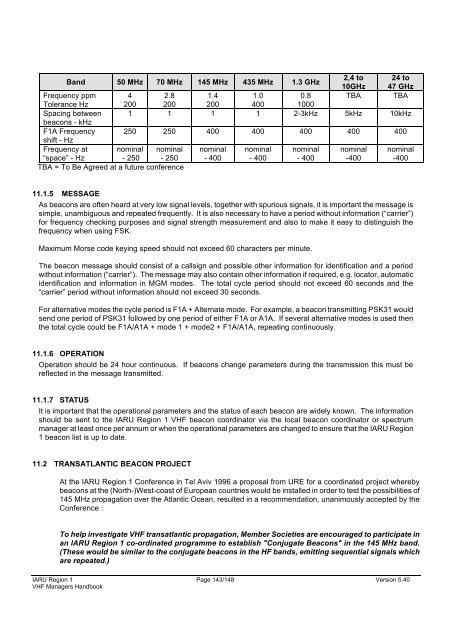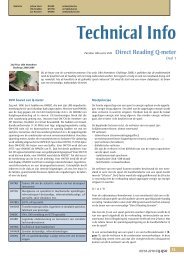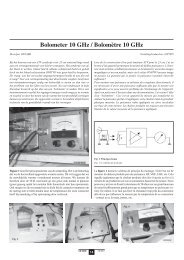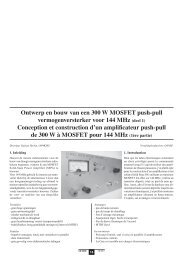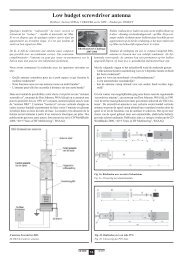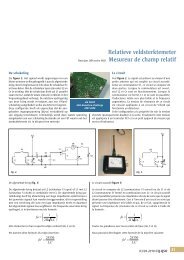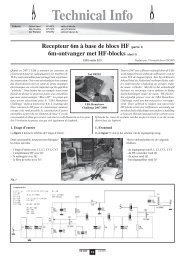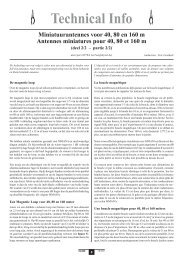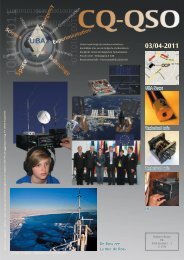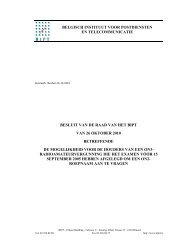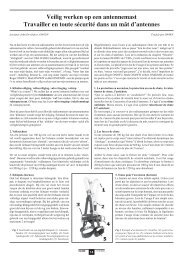IARU Region 1 VHF Managers Handbook - UBA
IARU Region 1 VHF Managers Handbook - UBA
IARU Region 1 VHF Managers Handbook - UBA
You also want an ePaper? Increase the reach of your titles
YUMPU automatically turns print PDFs into web optimized ePapers that Google loves.
Band 50 MHz 70 MHz 145 MHz 435 MHz 1.3 GHz<br />
2,4 to<br />
10GHz<br />
24 to<br />
47 GHz<br />
Frequency ppm 4 2.8 1.4 1.0 0.8 TBA TBA<br />
Tolerance Hz 200 200 200 400 1000<br />
Spacing between<br />
beacons - kHz<br />
1 1 1 1 2-3kHz 5kHz 10kHz<br />
F1A Frequency<br />
shift - Hz<br />
250 250 400 400 400 400 400<br />
Frequency at nominal nominal nominal nominal nominal nominal nominal<br />
“space” - Hz<br />
- 250 - 250 - 400 - 400 - 400 -400 -400<br />
TBA = To Be Agreed at a future conference<br />
11.1.5 MESSAGE<br />
As beacons are often heard at very low signal levels, together with spurious signals, it is important the message is<br />
simple, unambiguous and repeated frequently. It is also necessary to have a period without information (“carrier”)<br />
for frequency checking purposes and signal strength measurement and also to make it easy to distinguish the<br />
frequency when using FSK.<br />
Maximum Morse code keying speed should not exceed 60 characters per minute.<br />
The beacon message should consist of a callsign and possible other information for identification and a period<br />
without information (“carrier”). The message may also contain other information if required, e.g. locator, automatic<br />
identification and information in MGM modes. The total cycle period should not exceed 60 seconds and the<br />
“carrier” period without information should not exceed 30 seconds.<br />
For alternative modes the cycle period is F1A + Alternate mode. For example, a beacon transmitting PSK31 would<br />
send one period of PSK31 followed by one period of either F1A or A1A. If several alternative modes is used then<br />
the total cycle could be F1A/A1A + mode 1 + mode2 + F1A/A1A, repeating continuously.<br />
11.1.6 OPERATION<br />
Operation should be 24 hour continuous. If beacons change parameters during the transmission this must be<br />
reflected in the message transmitted.<br />
11.1.7 STATUS<br />
It is important that the operational parameters and the status of each beacon are widely known. The information<br />
should be sent to the <strong>IARU</strong> <strong>Region</strong> 1 <strong>VHF</strong> beacon coordinator via the local beacon coordinator or spectrum<br />
manager at least once per annum or when the operational parameters are changed to ensure that the <strong>IARU</strong> <strong>Region</strong><br />
1 beacon list is up to date.<br />
11.2 TRANSATLANTIC BEACON PROJECT<br />
At the <strong>IARU</strong> <strong>Region</strong> 1 Conference in Tel Aviv 1996 a proposal from URE for a coordinated project whereby<br />
beacons at the (North-)West-coast of European countries would be installed in order to test the possibilities of<br />
145 MHz propagation over the Atlantic Ocean, resulted in a recommendation, unanimously accepted by the<br />
Conference :<br />
To help investigate <strong>VHF</strong> transatlantic propagation, Member Societies are encouraged to participate in<br />
an <strong>IARU</strong> <strong>Region</strong> 1 co-ordinated programme to establish "Conjugate Beacons" in the 145 MHz band.<br />
(These would be similar to the conjugate beacons in the HF bands, emitting sequential signals which<br />
are repeated.)<br />
<strong>IARU</strong> <strong>Region</strong> 1 Page 143/148 Version 5.40<br />
<strong>VHF</strong> <strong>Managers</strong> <strong>Handbook</strong>


